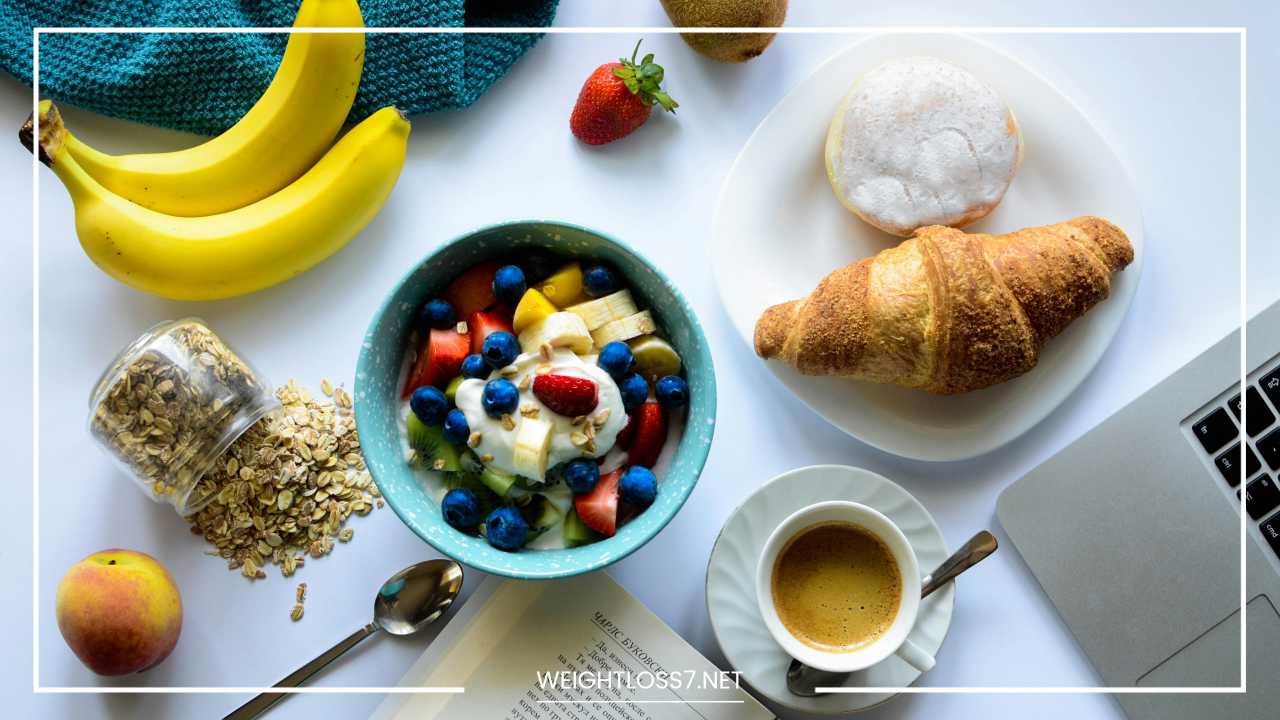How to Make Your Breakfast Cereal Healthier

Breakfast Cereal
How to Make Your Breakfast Cereal Healthier
Breakfast cereal is one of the most popular breakfast options worldwide. It’s quick, convenient, and widely available in various flavors and types, making it an easy go-to choice for a busy morning.
However, not all cereals are created equal. Many commercially available options are packed with refined sugars, artificial additives, and unhealthy fats, making them less than ideal for a nutritious start to the day.
The good news is that transforming your breakfast cereal into a healthier meal is easier than you might think.
By making a few mindful choices when selecting your cereal and customizing it with nutritious toppings and ingredients, you can enjoy a bowl of cereal that fuels you for the day ahead.
In this guide, we will explore several strategies for making your breakfast cereal healthier, from choosing the right ingredients to adding superfoods and mindful toppings.
1. Choose Whole Grains
The most important aspect of a healthy cereal is its base. Whole grains are rich in fiber, vitamins, and minerals that are essential for good health.
Unlike refined grains, which are stripped of their nutrients during processing, whole grains retain their bran, germ, and endosperm, making them a far superior choice for your morning bowl. Whole grains provide several benefits, including:
- Improved Digestion: The fiber in whole grains helps keep your digestive system running smoothly, promoting regular bowel movements and reducing the risk of constipation.
- Sustained Energy: Whole grains are broken down more slowly in the body, which means they provide sustained energy throughout the morning and help prevent energy crashes.
- Lower Risk of Chronic Diseases: Diets rich in whole grains have been linked to a lower risk of heart disease, type 2 diabetes, and certain cancers.
To make your breakfast cereal healthier, opt for cereals that are made with whole grains like:
- Whole Oats: Oats are a rich source of soluble fiber, which can help reduce cholesterol levels and support heart health. Oats are also packed with antioxidants called avenanthramides, which have anti-inflammatory properties.
- Whole Wheat: Whole wheat is a good source of fiber, B vitamins, iron, and magnesium. It helps keep your blood sugar levels steady and supports digestive health.
- Brown Rice: Brown rice is an excellent source of fiber, manganese, and selenium. It’s also a great gluten-free option for those with dietary restrictions.
- Quinoa: Quinoa is a complete protein, meaning it contains all nine essential amino acids. It’s also rich in fiber, magnesium, and antioxidants, making it a perfect addition to a nutritious breakfast.
- Barley: Barley is high in both soluble and insoluble fiber, which helps with digestion, lowers cholesterol, and stabilizes blood sugar.
Tip: When choosing cereal, always check the ingredients list to ensure the word “whole” appears first.
Whole-grain cereals are more nutrient-dense and beneficial for overall health. Avoid cereals that use refined grains such as white flour, which have little to no nutritional value and can lead to blood sugar spikes.
2. Limit Added Sugars
One of the most significant contributors to unhealthy breakfast cereals is the high sugar content. Many commercially available cereals are loaded with refined sugars, which not only contribute to weight gain but can also increase the risk of developing chronic diseases such as type 2 diabetes, heart disease, and obesity.
To make your breakfast cereal healthier, aim to limit added sugars. The American Heart Association recommends that women consume no more than 25 grams of added sugar per day and men no more than 36 grams. When choosing cereal, it’s essential to be vigilant about sugar content.
- Check the Nutrition Label: Many cereals have hidden sugars in the form of syrups, fructose, and other sweeteners. Look for cereals that have 5 grams or less of added sugar per serving.
- Be Aware of Sneaky Sugars: Added sugars can appear on the label under various names, such as high-fructose corn syrup, corn syrup, agave nectar, maltose, or brown sugar. Just because a cereal doesn’t list “sugar” as the first ingredient doesn’t mean it’s sugar-free.
- Opt for Unsweetened or Lightly Sweetened Cereals: Many healthy cereals are available in unsweetened or lightly sweetened options. These cereals often use whole food sources like fruit or spices to add flavor without excessive sugar.
Tip: If you enjoy a touch of sweetness in your cereal, try naturally sweetening it with fresh fruit, a drizzle of honey, or a sprinkle of cinnamon. You’ll get all the sweetness you crave without the added sugars.
3. Prioritize Protein
Protein is an essential nutrient that helps build and repair tissues, support immune function, and maintain muscle mass.
It also plays a crucial role in keeping you full and satisfied throughout the day. A high-protein breakfast can help stabilize blood sugar levels and prevent hunger pangs later in the morning.
If you want your cereal to keep you feeling fuller for longer, it’s important to choose a cereal that provides adequate protein.
Look for cereals that contain at least 3 grams of protein per serving. While many cereals focus on carbohydrates, there are several protein-rich options available:
- Fortified Cereals: Some cereals are fortified with additional protein from plant-based sources like peas, soy, or lentils, or from animal-based sources like whey or milk protein. These cereals can offer a satisfying protein boost.
- Cereals with Nuts and Seeds: Many cereals incorporate nuts and seeds, such as almonds, walnuts, chia seeds, and flaxseeds, which are excellent sources of plant-based protein.
- Add Protein-Rich Toppings: If your cereal doesn’t contain enough protein on its own, you can easily add protein by topping it with Greek yogurt, nut butter, or a sprinkle of hemp seeds or chia seeds.
Tip: Greek yogurt is an excellent topping choice for adding both protein and probiotics. It creates a creamy texture and enhances the overall nutritional value of your cereal.
4. Boost Fiber Intake
Fiber is essential for good digestive health and has numerous other benefits, including supporting heart health, controlling blood sugar levels, and promoting a feeling of fullness.
Most Americans don’t get enough fiber in their diet, so increasing fiber intake is one of the simplest ways to make your breakfast cereal healthier.
Aim for cereals with at least 3 grams of fiber per serving. Whole-grain cereals naturally contain more fiber, but there are also several high-fiber options available on the market. Additionally, you can boost the fiber content of your cereal by adding fiber-rich toppings.
- Look for High-Fiber Cereals: Many cereals made with whole grains, such as oats, quinoa, and barley, are naturally high in fiber. Some brands also offer cereals with added fiber from sources like inulin (a type of prebiotic fiber) or psyllium husk.
- Add Fiber-Rich Toppings: Fruits like apples, berries, and pears are excellent sources of soluble fiber, which can help regulate cholesterol and stabilize blood sugar. Seeds such as chia seeds, flaxseeds, and hemp seeds are also rich in fiber and healthy fats.
Tip: Fiber also helps regulate cholesterol levels, improves gut health, and can help with weight management by promoting a feeling of fullness. Aim to include at least one high-fiber food in your cereal every morning.
5. Watch Out for Sodium
Excess sodium in the diet can lead to high blood pressure, heart disease, and kidney problems. While sodium is an essential mineral that the body needs in small amounts, many processed foods—including breakfast cereals—contain high amounts of sodium. To make your breakfast cereal healthier, it’s essential to choose options that are low in sodium.
- Aim for Less Than 200 Milligrams of Sodium per Serving: Some cereals can have surprisingly high sodium content, so it’s essential to check the nutrition label.
- Compare Brands: Sodium content can vary widely between cereals. Be sure to compare brands to find options with the least amount of sodium.
- Avoid Processed Ingredients: Processed ingredients such as preservatives, flavor enhancers, and artificial colors often contain excess sodium. Choosing whole food-based cereals or those made with minimal processing can help reduce sodium intake.
Tip: If you add salt or other salty toppings to your cereal, be mindful of your total sodium intake throughout the day. Opt for fresh fruits or unsalted nuts instead of adding extra salt.
6. Embrace Healthy Toppings
Toppings can make a big difference in the overall nutritional value of your cereal. They can add extra vitamins, minerals, healthy fats, and protein, helping to turn a basic bowl of cereal into a more balanced and satisfying meal.
- Fresh or Frozen Fruit: Fruits like berries (blueberries, strawberries, raspberries), bananas, and apples provide antioxidants, vitamins, and natural sweetness. These fruits also add fiber, which is important for digestive health.
- Nuts and Seeds: Nuts such as almonds, walnuts, and cashews provide healthy fats, protein, and fiber, while seeds like chia, flax, and hemp add extra nutrients like omega-3 fatty acids.
- Greek Yogurt: Greek yogurt is high in protein and probiotics, which support gut health. It also creates a creamy texture that complements crunchy cereals.
- Spices: Spices like cinnamon, nutmeg, ginger, or turmeric not only enhance the flavor of your cereal but also provide antioxidants and anti-inflammatory properties. Cinnamon, for example, has been shown to help lower blood sugar levels.
Tip: Experiment with different combinations of fruits, nuts, seeds, and spices to create a variety of flavor profiles. Adding a variety of toppings ensures you get a wider range of nutrients.
7. Consider Homemade Granola
If you want complete control over the ingredients in your breakfast cereal, making your own granola is a great option.
Homemade granola allows you to choose healthy ingredients, limit added sugars, and customize the texture and flavors according to your preferences.
- Use Whole Grains: Oats, quinoa, and barley are excellent choices for the base of your granola. They provide fiber and essential nutrients.
- Add Healthy Fats: Use heart-healthy fats such as coconut oil, olive oil, or avocado oil to bind the granola and make it crunchy.
- Sweeten Naturally: Instead of refined sugars, sweeten your granola with natural alternatives such as honey, maple syrup, or dried fruit. These options provide sweetness without the negative health effects of added sugars.
Tip: Homemade granola can be made in large batches and stored in an airtight container, making it an easy, nutritious option for busy mornings.
8. Don’t Forget the Milk
The type of milk you choose can significantly impact the overall nutritional value of your cereal. There are a variety of milk options available, including dairy and plant-based choices, each with its own unique benefits.
- Dairy Milk: Dairy milk is an excellent source of calcium, vitamin D, and protein. Choose organic or grass-fed dairy when possible for higher nutrient quality.
- Plant-Based Milks: Many plant-based milks, such as almond milk, soy milk, and oat milk, are fortified with calcium, vitamin D, and other nutrients. Choose unsweetened options to reduce added sugars.
- Yogurt: If you prefer a thicker, creamier texture, consider using yogurt as your milk substitute. Greek yogurt, in particular, is high in protein and probiotics.
Tip: Look for plant-based milks that are fortified with calcium and vitamin D to support bone health.
9. Mind Your Portion Size
Even healthy cereals can contribute to weight gain if you eat too much. Many cereal boxes provide portion sizes that are smaller than what most people pour into their bowls, so it’s easy to overeat.
- Use a Measuring Cup: To control portion size, use a measuring cup to serve your cereal. This ensures you’re eating an appropriate amount and helps prevent overeating.
- Listen to Your Body: Pay attention to your hunger and fullness cues. If you feel satisfied after a smaller portion, don’t feel the need to finish the entire bowl.
Tip: Pair your cereal with a piece of fruit or a side of protein to create a more balanced meal that will keep you full for longer.
10. Make It Fun
Making your cereal enjoyable is a great way to encourage healthy eating habits, especially for children. Getting the family involved in choosing toppings and experimenting with flavors can make breakfast more exciting and creative.
- Create Colorful Bowls: Use a variety of colorful fruits to create visually appealing bowls that everyone will enjoy.
- Fun Shapes: Use cookie cutters to create fun shapes from fruit, like stars, hearts, or animals.
- Let Kids Choose Toppings: Allow children to choose their own healthy toppings. This gives them a sense of control and helps foster a positive relationship with food.
Tip: Make it a fun family activity to prepare and customize your cereal together.
Additional Tips for a Healthier Cereal Experience:
- Read Food Labels Carefully: Always check the ingredient list for added sugars, sodium, and preservatives.
- Compare Brands: Some cereals may appear healthy at first glance, but their nutritional content can vary widely. Compare different options to find the healthiest choice.
- Consider Your Dietary Needs: Choose cereals that align with your specific dietary needs, whether that’s gluten-free, high-protein, low-carb, or high-fiber.
- Experiment with New Flavors: Don’t be afraid to try new cereals or toppings to keep your breakfast exciting and full of variety.
Making your breakfast cereal healthier is a journey that can lead to better energy, improved digestion, and enhanced overall health.
By making mindful choices when selecting your cereal, controlling portion sizes, and experimenting with nutritious toppings, you can enjoy a satisfying and nourishing breakfast every day.
With a few simple adjustments, your bowl of cereal can become a powerhouse of nutrition that fuels your body and keeps you energized throughout the morning.

















